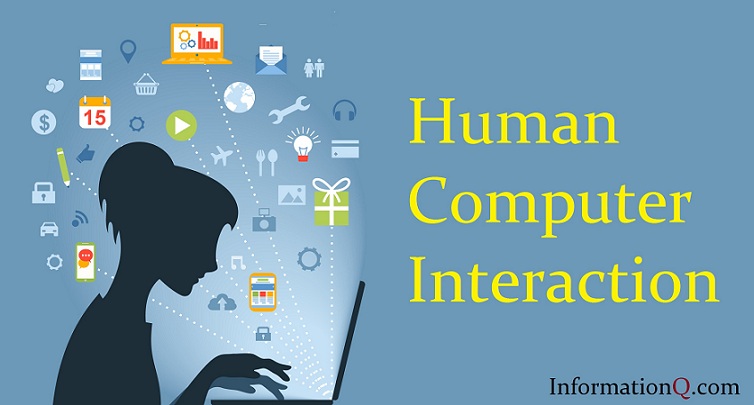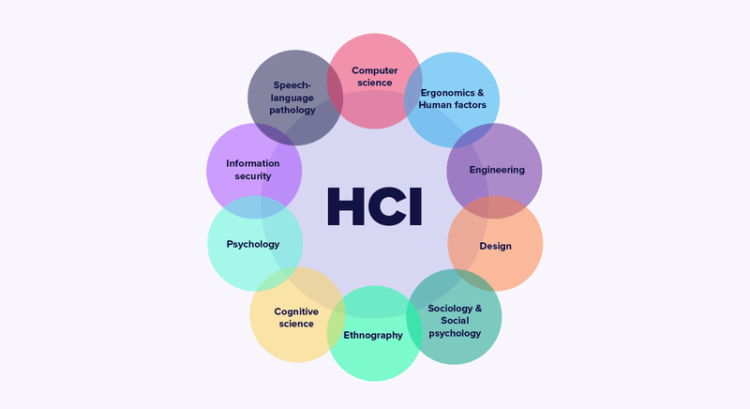Introduction
Human–computer interaction (HCI) has evolved from command lines to natural conversations, from mechanical keyboards to immersive virtual environments. Yet as machines become increasingly intelligent, autonomous, and embedded in our lives, the design of interaction is no longer a purely technical challenge — it is a profoundly ethical one.
Every interface today mediates not only information but also power. Algorithms decide what we see, when we see it, and even how we feel about it. Smart assistants listen to our homes; recommendation systems predict our desires; autonomous systems act on our behalf. As the line between human and machine blurs, the question shifts from how we interact with technology to what kind of relationship we want to build with it.
This article examines how ethical principles can and must be integrated into the next generation of HCI design. It explores the moral dimensions of user autonomy, privacy, transparency, inclusivity, and psychological well-being. It argues that responsible interaction design — guided by empathy, fairness, and accountability — is essential to ensure that the future of HCI enhances, rather than diminishes, human dignity.
1. Ethics and the Evolution of Interaction
In the early decades of computing, HCI focused on usability — making systems efficient, learnable, and error-tolerant. As interfaces became more intuitive and personal, designers began to address the emotional dimension of experience. Now, as AI and ubiquitous computing shape behavior at scale, the ethical dimension has become unavoidable.
Each interaction between human and machine carries moral weight. A “like” button can reinforce addiction; a voice interface can reflect bias; a facial recognition system can perpetuate surveillance. The ethics of HCI thus extends beyond individual experience — it shapes collective patterns of attention, communication, and trust.
The shift from interface design to relationship design means HCI must now consider human flourishing as a primary design outcome. The interface is not neutral; it is a moral medium.
2. Autonomy and the Challenge of Persuasive Design
One of the most pressing ethical issues in modern HCI is the erosion of user autonomy. Many digital systems are engineered not to empower users, but to retain their attention. Through gamification, notification loops, and algorithmic personalization, interfaces can subtly manipulate decision-making.
This phenomenon — often called persuasive design — exploits cognitive biases such as the fear of missing out (FOMO) or variable reward schedules. Social media platforms, for instance, use intermittent reinforcement to keep users scrolling. While such mechanisms drive engagement, they also undermine self-regulation and agency.
Ethical HCI must reject manipulation as a design strategy. Instead, it should embrace autonomy-supportive design, which prioritizes informed choice, transparency, and meaningful consent. For example:
- Interfaces should clearly communicate how recommendations are generated.
- Defaults should favor privacy and well-being rather than corporate profit.
- Systems should help users track and manage their time online, not conceal it.
Designing for autonomy means giving users control over their attention — the most valuable resource in the digital age.
3. Privacy in the Age of Pervasive Interaction
In the post-touch era, interaction is continuous. Sensors, cameras, and microphones capture not only explicit commands but also implicit behaviors: gestures, tone, emotion, gaze, and location. The richness of this data fuels personalization — but also poses immense privacy risks.
Ethical HCI must address privacy not as a setting but as a core design principle. This includes:
- Data minimization: collecting only what is necessary for functionality.
- Local processing: enabling devices to interpret signals without constant cloud transmission.
- Informed visibility: making users aware of what data is being used and why.
Moreover, designers must consider psychological privacy — the right not to be constantly observed or analyzed. When every movement or expression can be interpreted by AI, the sense of unmonitored space becomes vital for human comfort and freedom.
The interface of the future should not simply be convenient; it should be trustworthy.
4. Transparency and Explainability
Modern interfaces often conceal complexity behind simplicity. Voice assistants answer instantly; recommender systems suggest effortlessly — yet few users understand how these outputs are generated. This opacity fosters dependency without understanding.
Ethical HCI demands transparency. Systems must be designed to explain themselves in human terms. When an AI denies a loan, filters a job candidate, or flags a message, the user deserves to know the reasoning behind that decision.
Transparency, however, is not merely technical — it is communicative. Explanations must be designed with empathy, avoiding jargon while conveying meaningful logic. Interactive visualization tools, explainable dashboards, and conversational explanations can all help users grasp the “why” behind the “what.”
The future of trust in technology depends on our ability to design interfaces that are not just intuitive, but intelligible.
5. Designing for Diversity and Inclusion
Every interface embodies assumptions about its users — their language, culture, abilities, and values. Historically, many systems have reflected narrow perspectives, excluding those who do not fit the “default” user profile.
Inclusive HCI challenges this bias by designing for the full spectrum of humanity. Accessibility features such as voice control, haptic feedback, and screen readers have made major progress, but true inclusion goes further. It means co-creating with marginalized groups, respecting cultural diversity in design metaphors, and avoiding algorithmic discrimination.
For example, gesture recognition systems must account for cultural variation in body language. Emotion-recognition AI must be trained on diverse facial datasets. Virtual avatars should represent gender, ethnicity, and ability with authenticity and choice.
Ethical HCI recognizes that diversity is not a constraint — it is a design asset that strengthens empathy and innovation.
6. Emotional and Psychological Well-Being
In a world where humans spend hours each day interacting with screens, interfaces profoundly influence mental health. Research links excessive social media use with anxiety, depression, and reduced attention span. Conversely, well-designed digital experiences can foster calm, creativity, and connection.
Designers have begun to explore calm technology — systems that inform without overwhelming, assist without interrupting. Instead of constant notifications, interfaces can use ambient cues or periodic summaries. Instead of addictive scrolling, systems can promote mindful engagement and reflection.
AI-driven emotional assistants might one day detect signs of stress and recommend breaks. Yet these systems must be built on trust, not exploitation. Emotional data is among the most intimate forms of information; using it responsibly is both a technical and ethical obligation.
A humane interface should leave users feeling empowered, not drained.

7. Algorithmic Bias and Justice in Interaction
Behind every user interface lies an algorithm — and behind every algorithm lies human judgment. When training data reflects social inequality, interfaces can reinforce discrimination, often invisibly. Facial recognition systems that misidentify darker-skinned individuals or hiring algorithms that favor certain demographics are not isolated errors; they are systemic design failures.
Ethical HCI must integrate algorithmic justice into interaction design. This involves:
- Conducting bias audits on data and models.
- Enabling user feedback loops to detect unfair behavior.
- Designing for transparency in automated decision-making.
Beyond technical fixes, justice-oriented HCI requires diversity within design teams themselves. Only by including multiple perspectives in the design process can we identify and prevent harm before it occurs.
The interface, in this sense, becomes a site of social ethics — where fairness must be felt, not just declared.
8. The Ethics of Automation and Agency
As AI systems grow more autonomous, the dynamics of control shift. Self-driving cars, automated assistants, and generative AI can act with minimal human supervision. This raises questions about accountability: when machines act, who is responsible?
Ethical HCI must ensure that agency remains human-centered. Automation should augment, not replace, human judgment. Interfaces must communicate system confidence levels, allow easy overrides, and make clear when decisions are algorithmic.
The goal is not to eliminate automation but to maintain shared agency — a partnership in which humans remain informed and empowered participants. The interface becomes a mediator of responsibility, guiding when to trust and when to intervene.
9. Designing for Future Generations
Ethical HCI must also look beyond the present. The interfaces we design today will shape the cognitive, social, and moral development of future generations. Children growing up with voice assistants and virtual companions learn not only how to use technology, but how to treat it — and, by extension, how to treat others.
Designers must consider what values interfaces teach implicitly. Do digital assistants reinforce gender stereotypes through their voices? Do learning platforms encourage curiosity or passive consumption? Does the design of virtual worlds promote empathy or escapism?
Sustainable HCI means designing with intergenerational responsibility — creating systems that nurture critical thinking, respect, and ecological awareness in their users.
10. Frameworks for Ethical Interaction Design
To operationalize ethics in HCI, organizations can adopt structured frameworks. Several key approaches include:
- Value-Sensitive Design (VSD): Integrates moral values (e.g., privacy, autonomy, equity) throughout the design process.
- Participatory Design: Involves users — especially marginalized ones — in co-creating technology that reflects their needs.
- Ethical Impact Assessment: Evaluates potential harms and benefits of interaction systems before deployment.
- Ethical AI Guidelines: Embeds fairness, transparency, and accountability in algorithmic systems.
These frameworks transform ethics from abstract discussion to actionable design. They remind us that moral responsibility is not an afterthought — it is a design constraint as real as usability or performance.
11. Toward Empathic Interfaces
The next frontier in HCI is emotional intelligence. As AI learns to perceive and simulate empathy, we must ensure that compassion is embedded not as performance but as principle. Empathic interfaces should listen more than they speak, assist rather than persuade, and understand without exploiting.
Imagine a healthcare assistant that senses anxiety and responds with reassurance; or a workplace dashboard that celebrates human breaks as productivity, not waste. These systems reflect a shift from efficiency to empathy — from design for attention to design for care.
Empathy, in this context, is not just a human virtue — it is a design philosophy for sustainable interaction.
12. Conclusion: The Moral Horizon of HCI
As technology becomes an extension of human thought and emotion, the ethics of interaction becomes the ethics of being. We are no longer merely designing interfaces; we are designing relationships — between people, machines, and the world they co-create.
The future of HCI depends on our ability to embed human values in every line of code and every gesture of design. Autonomy, privacy, inclusivity, empathy, and justice must form the moral grammar of interaction.
The ethical interface is not a constraint on innovation — it is its highest form. By designing with responsibility and care, we ensure that the machines we build reflect not only our intelligence but our humanity.











































